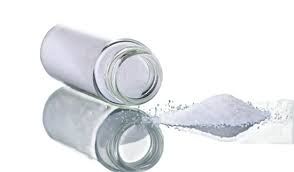
- +86-13363869198
- weimiaohb@126.com

Des . 22, 2024 23:29 Back to list
what are intermediates in organic chemistry
Understanding Intermediates in Organic Chemistry
In the fascinating realm of organic chemistry, the term intermediate refers to transient species that form during a chemical reaction but are not present in the final products. These intermediates can greatly influence the reaction pathway and the overall kinetics and thermodynamics of a chemical reaction. Understanding intermediates is essential for chemists as they provide crucial insights into reaction mechanisms, stability, and the influence of various conditions on the course of a reaction.
Classification of Intermediates
Intermediates in organic chemistry can be broadly classified into several categories based on their structure and reactivity
1. Carbocations These are positively charged species characterized by a carbon atom that has only six electrons in its valence shell. Carbocations are highly reactive and tend to undergo rapid transformations to achieve stability, often leading to rearrangements or reactions with nucleophiles.
2. Carbanions These negatively charged species contain a carbon atom with a complete octet, bearing an extra electron. Carbanions are nucleophilic and can react with electrophiles, serving as key players in many organic reactions.
3. Free Radicals These intermediates possess an unpaired electron, making them highly reactive. Free radicals participate in chain reactions and are fundamental in processes such as polymerization and oxidative reactions.
4. Arenium Ions In electrophilic aromatic substitution reactions, arenium ions form as intermediates when an electrophile attacks an aromatic ring. These positively charged intermediates can rearrange or lose a proton to regenerate the aromaticity of the starting compound.
5. Enolates These are resonance-stabilized intermediates that result from the deprotonation of a carbonyl compound. Enolates are crucial in various reactions, such as the aldol condensation and certain carbon-carbon bond-forming reactions.
The Role of Intermediates in Reaction Mechanisms
what are intermediates in organic chemistry

Understanding the role of intermediates is vital for elucidating the mechanisms of organic reactions. Chemists often use intermediates to propose and refine mechanisms through techniques such as kinetic studies, spectroscopic methods, and computational chemistry. By analyzing the behavior of intermediates, researchers can identify elementary steps in a reaction and how different factors such as temperature, solvent, and concentration impact the overall rate and pathway of the reaction.
The presence of intermediates also helps chemists understand why certain reactions favor specific products over others, as intermediates can lead to competitive pathways in complex transformation processes. For example, the stability of an intermediate can dictate the likelihood of a particular reaction pathway occurring, guiding the selection of conditions to optimize product yield.
Experimental Techniques to Identify Intermediates
Experimentally identifying intermediates can be challenging due to their short-lived nature. However, several analytical techniques have been employed to study them
1. NMR Spectroscopy Nuclear Magnetic Resonance (NMR) can provide insights into the structure and dynamics of intermediates. By isolating and studying these species in situ or in a cryogenic state, chemists can gather invaluable data regarding their characteristics.
2. Mass Spectrometry This technique allows for the detection of intermediates based on their mass-to-charge ratio. Time-of-flight mass spectrometry (TOF-MS) can be particularly useful in quickly identifying short-lived species during reaction monitoring.
3. Flash Photolysis This technique involves the use of short pulses of light to generate intermediates, which can then be monitored during their subsequent decay to form products. This method is particularly effective for studying reactive intermediates such as free radicals.
4. Computational Chemistry Theoretical methods, including density functional theory (DFT), can predict the stability and reactivity of intermediates. By simulating reaction pathways, computational studies can provide insights into the energy landscape of reactions involving intermediates.
Conclusion
Intermediates play a crucial role in organic chemistry, acting as the bridge between reactants and products. Their transient nature, combined with their structural diversity, makes them a central focus in understanding chemical reactivity and mechanisms. As chemists unravel the complexities associated with intermediates, they enhance our ability to design and optimize chemical reactions, leading to advancements in areas such as pharmaceuticals, materials science, and industrial processes. By investigating these fleeting species, we unlock the mysteries of chemical transformations and expand the frontiers of organic chemistry.
-
Top Hydroxychloroquine Sulfate CAS 747-36-4 Suppliers & Factories
NewsJun.08,2025
-
High-Quality 1895865-10-7 Chemical Leading Supplier & Manufacturer
NewsJun.08,2025
-
Premium [412013-42-4] Supplier High-Purity Chemical Solutions
NewsJun.07,2025
-
Premium 99% Purity PMK Ethyl Glycidate Suppliers & Factories
NewsJun.07,2025
-
1242137-15-0 - High Purity Chemical Compounds Supplier
NewsJun.06,2025
-
Reliable CAS 99593-25-6 Rilmazafone Factories & Suppliers
NewsJun.06,2025